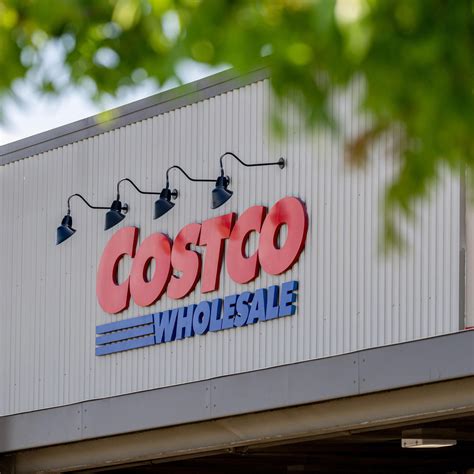
A woman is suing Costco for millions of dollars, alleging negligence led to severe injuries sustained at a warehouse store. The lawsuit claims a heavy box fell and struck the woman, resulting in permanent physical damage.
Woman Sues Costco for Millions Over Injury Claiming Negligence
A woman identified as Valerie Mollinedo has filed a lawsuit against Costco Wholesale Corporation, seeking millions of dollars in damages for severe injuries she allegedly sustained at one of the retailer’s warehouse stores. The lawsuit, filed in the Superior Court of California for the County of Los Angeles, accuses Costco of negligence, claiming that the company’s unsafe conditions directly led to Mollinedo’s injuries.
According to the complaint, the incident occurred on December 16, 2022, at a Costco location in Pacoima, California. Mollinedo alleges that while shopping, a heavy box fell and struck her, causing significant and lasting physical harm. The lawsuit asserts that Costco was negligent in maintaining a safe environment for its customers, specifically citing the improper stacking or storage of merchandise.
The complaint states, “As a direct and proximate result of the negligence, carelessness, and recklessness of Defendants, and each of them, Plaintiff, VALERIE MOLLINEDO, was caused to sustain serious and severe injuries, and has suffered and continues to suffer great physical, mental, and emotional pain and suffering.”
Mollinedo is seeking compensation for medical expenses, lost wages, and pain and suffering, among other damages. The exact amount sought remains unspecified but is expected to be in the millions of dollars, considering the severity and long-term impact of her alleged injuries.
Costco has not yet issued an official statement regarding the lawsuit. However, the company is expected to mount a vigorous defense, potentially challenging the claims of negligence and the extent of Mollinedo’s injuries. The case is likely to involve extensive discovery, including depositions, document requests, and expert testimony, as both sides prepare for a potential trial.
This lawsuit raises important questions about the responsibilities of large retailers like Costco in ensuring the safety of their customers. While accidents can happen in any retail environment, the lawsuit alleges that Costco failed to take reasonable precautions to prevent foreseeable harm. The outcome of this case could have significant implications for retailers and their safety protocols, potentially leading to increased scrutiny and stricter enforcement of safety standards.
The Alleged Incident
The lawsuit details the circumstances surrounding the alleged incident, stating that Mollinedo was lawfully present at the Costco store in Pacoima on December 16, 2022. While she was shopping, a heavy box, reportedly improperly stacked or stored, fell and struck her, causing immediate and severe injuries.
The complaint emphasizes that Costco had a duty to exercise reasonable care in maintaining its premises in a safe condition for customers. This includes ensuring that merchandise is properly stacked, stored, and secured to prevent it from falling and causing injury. Mollinedo argues that Costco breached this duty by failing to adequately inspect and maintain the store, allowing a dangerous condition to exist, which ultimately led to her injuries.
The lawsuit further alleges that Costco knew or should have known about the risk of merchandise falling and causing injury to customers. It asserts that similar incidents may have occurred in the past, and that Costco failed to take appropriate measures to prevent future accidents.
The specifics of the box’s contents, weight, and the height from which it fell are not explicitly detailed in the initial lawsuit, but these details are expected to emerge during the discovery phase of the litigation.
Injuries and Damages Claimed
Mollinedo claims that as a direct result of the incident, she sustained serious and permanent injuries. The lawsuit describes these injuries as causing significant physical, mental, and emotional pain and suffering. While the specific nature of the injuries is not fully disclosed in the initial complaint, it is indicated that they are severe enough to warrant a substantial financial award.
Mollinedo is seeking compensation for several categories of damages, including:
- Medical Expenses: The costs associated with treating her injuries, including doctor visits, hospital stays, physical therapy, medication, and other related medical care. Given the severity of the alleged injuries, these expenses could be substantial.
- Lost Wages: Compensation for the income she has lost and will continue to lose as a result of her injuries. This includes past lost wages, as well as future lost earning capacity if her injuries prevent her from returning to work or limit her ability to earn a living.
- Pain and Suffering: Compensation for the physical pain, emotional distress, and mental anguish she has experienced and will continue to experience as a result of her injuries. This can include compensation for loss of enjoyment of life, diminished quality of life, and psychological trauma.
- Other Damages: The lawsuit also seeks compensation for any other damages that Mollinedo has sustained as a result of the incident, such as property damage, out-of-pocket expenses, and any other economic losses.
The lawsuit emphasizes that Mollinedo’s injuries have had a significant and lasting impact on her life, preventing her from engaging in activities she once enjoyed and causing her ongoing pain and suffering. She argues that Costco should be held accountable for its negligence and should be required to compensate her for the full extent of her damages.
Legal Arguments and Theories
Mollinedo’s lawsuit is based on the legal theory of negligence. To succeed in a negligence claim, she must prove the following elements:
- Duty of Care: That Costco owed her a duty of care to maintain its premises in a safe condition for customers.
- Breach of Duty: That Costco breached this duty by failing to exercise reasonable care in stacking, storing, or maintaining its merchandise.
- Causation: That Costco’s breach of duty was the direct and proximate cause of her injuries.
- Damages: That she sustained actual damages as a result of her injuries.
The lawsuit argues that Costco owed Mollinedo a duty of care as a customer on its premises. It alleges that Costco breached this duty by failing to properly stack and store its merchandise, creating a dangerous condition that posed a risk of injury to customers. The lawsuit further argues that Costco’s breach of duty was the direct and proximate cause of Mollinedo’s injuries, and that she has sustained damages as a result.
In addition to negligence, the lawsuit may also assert other legal theories, such as premises liability. Premises liability is a legal doctrine that holds property owners liable for injuries that occur on their property as a result of dangerous conditions. To succeed on a premises liability claim, Mollinedo must prove that Costco knew or should have known about the dangerous condition and failed to take reasonable steps to remedy it.
The success of Mollinedo’s lawsuit will depend on her ability to prove these elements to the satisfaction of a judge or jury. Costco is expected to argue that it did not breach its duty of care, that its actions were not the cause of Mollinedo’s injuries, or that Mollinedo was partially or entirely responsible for her own injuries.
Costco’s Potential Defenses
Costco is likely to raise several defenses in response to Mollinedo’s lawsuit. These defenses may include:
- Lack of Negligence: Costco may argue that it did not breach its duty of care to Mollinedo. It may present evidence that it took reasonable steps to maintain its premises in a safe condition, such as regularly inspecting its merchandise, training its employees on proper stacking and storage procedures, and warning customers of potential hazards.
- Comparative Negligence: Costco may argue that Mollinedo was partially or entirely responsible for her own injuries. For example, it may claim that she was not paying attention to her surroundings, that she was walking in an area where customers were not supposed to be, or that she failed to take reasonable precautions to avoid being injured.
- Assumption of Risk: Costco may argue that Mollinedo assumed the risk of being injured by shopping at its store. It may claim that customers are aware of the potential hazards associated with shopping in a warehouse environment, such as heavy merchandise, crowded aisles, and the risk of items falling from shelves.
- Lack of Causation: Costco may argue that its actions were not the direct and proximate cause of Mollinedo’s injuries. It may claim that her injuries were caused by some other factor, such as a pre-existing medical condition or an unrelated accident.
- Challenge the Extent of Injuries: Costco may challenge the extent and severity of Mollinedo’s claimed injuries, arguing that they are exaggerated or not directly related to the alleged incident at the store.
To support its defenses, Costco may present evidence such as surveillance footage, employee testimony, expert witness testimony, and medical records. The outcome of the case will depend on which side is able to present the most persuasive evidence and arguments.
Implications and Potential Outcomes
The outcome of Mollinedo’s lawsuit could have significant implications for Costco and other retailers. If Mollinedo is successful, it could set a precedent for other customers who are injured on retail premises due to alleged negligence. This could lead to an increase in lawsuits against retailers and could force them to take additional steps to ensure the safety of their customers.
Even if Mollinedo is not successful, the lawsuit could still have a negative impact on Costco’s reputation. The publicity surrounding the case could damage the company’s image and could lead to a decrease in sales.
The potential outcomes of the lawsuit include:
- Settlement: The parties could reach a settlement agreement, in which Costco agrees to pay Mollinedo a sum of money in exchange for her dropping the lawsuit. Settlements are common in personal injury cases, as they allow both sides to avoid the expense and uncertainty of a trial.
- Trial: The case could proceed to trial, where a judge or jury will hear evidence and arguments from both sides and decide whether Costco was negligent and whether Mollinedo is entitled to damages.
- Dismissal: The court could dismiss the lawsuit if it finds that Mollinedo has failed to state a valid claim or that there is insufficient evidence to support her claim.
The outcome of the case is uncertain and will depend on a variety of factors, including the evidence presented, the legal arguments made, and the judge’s or jury’s interpretation of the law.
Legal Precedents and Relevant Laws
This case will likely draw upon established legal precedents related to premises liability and negligence. California law, specifically, will be central to determining the outcome. Key legal concepts include:
- California Civil Code Section 1714: This section codifies the general duty of care that everyone owes to others, requiring individuals and businesses to exercise reasonable care to prevent harm.
- California Premises Liability Law: This body of law outlines the responsibilities of property owners, including retailers, to maintain safe conditions for visitors. It distinguishes between different types of visitors (invitees, licensees, and trespassers) and the corresponding duty of care owed to each.
- Res Ipsa Loquitur: This legal doctrine, meaning “the thing speaks for itself,” may be relevant if Mollinedo can demonstrate that the incident would not have occurred in the absence of negligence and that Costco had exclusive control over the instrumentality (the box) that caused the injury. If applicable, it creates a presumption of negligence against Costco, shifting the burden of proof to them to demonstrate they were not negligent.
Similar cases involving injuries in retail environments can also serve as precedents. These cases often hinge on demonstrating the retailer’s knowledge of a hazardous condition and their failure to take reasonable steps to correct it. Factors considered include:
- Prior incidents: Evidence of previous accidents involving falling merchandise can strengthen a plaintiff’s case by demonstrating that the retailer was aware of a potential hazard.
- Industry standards: Evidence of industry best practices for stacking and storing merchandise can be used to argue that the retailer deviated from the standard of care.
- Inspection and maintenance records: These records can be used to assess whether the retailer regularly inspected its premises and addressed any safety concerns.
Impact on Costco’s Operations and Policies
Regardless of the outcome of the lawsuit, it is likely to prompt Costco to review and potentially revise its safety protocols. This could include:
- Enhanced Employee Training: Implementing more comprehensive training programs for employees on proper stacking and storage techniques, as well as hazard identification and prevention.
- Stricter Inventory Management: Improving inventory management practices to ensure that merchandise is properly organized and secured, reducing the risk of items falling from shelves.
- Increased Inspections: Conducting more frequent and thorough inspections of store premises to identify and address potential safety hazards.
- Improved Signage and Warnings: Posting clear and conspicuous warnings to customers about potential hazards, such as areas where merchandise is being stacked or stored.
- Review of Stacking Procedures: Re-evaluating the height and manner in which merchandise is stacked to minimize the risk of items falling.
- Customer Awareness Campaigns: Implementing campaigns to educate customers about safety precautions while shopping in a warehouse environment.
These changes could help Costco reduce the risk of future accidents and protect its customers from injury. They could also help the company mitigate its potential liability in future lawsuits.
Expert Opinions and Analysis
Legal experts suggest that Mollinedo’s case will depend heavily on the evidence presented regarding Costco’s alleged negligence. “The key will be demonstrating that Costco either knew or should have known about the dangerous condition that caused the injury,” says a personal injury attorney not directly involved in the case. “This could involve showing that Costco had a history of similar incidents or that its employees failed to follow proper safety procedures.”
Safety experts emphasize the importance of retailers maintaining a safe environment for their customers. “Retailers have a responsibility to ensure that their premises are free from hazards that could cause injury,” says a safety consultant. “This includes properly stacking and storing merchandise, conducting regular inspections, and warning customers of potential dangers.”
The case also highlights the challenges faced by plaintiffs in personal injury lawsuits against large corporations like Costco. “These cases can be complex and expensive to litigate,” says a legal analyst. “Plaintiffs often face an uphill battle against well-funded defense teams who are skilled at minimizing liability.”
Frequently Asked Questions (FAQ)
- What is the basis of the lawsuit against Costco?
- The lawsuit is based on allegations of negligence. The plaintiff, Valerie Mollinedo, claims that Costco failed to maintain a safe environment for customers, leading to her injuries when a heavy box fell and struck her at a Costco store.
- What specific injuries is the plaintiff claiming to have suffered?
- The lawsuit mentions “serious and severe injuries” that have caused “great physical, mental, and emotional pain and suffering.” While the exact nature of the injuries is not detailed in the initial complaint, they are described as significant and lasting, warranting substantial compensation.
- What damages is the plaintiff seeking in the lawsuit?
- The plaintiff is seeking compensation for medical expenses (past and future), lost wages (past and future), pain and suffering, and other damages resulting from the alleged injuries. The total amount sought is expected to be in the millions of dollars.
- What are some potential defenses that Costco might use in this case?
- Costco may argue that it was not negligent, that it took reasonable steps to maintain a safe environment, or that the plaintiff was partially or entirely responsible for her own injuries. They may also challenge the extent and severity of the claimed injuries or argue that the injuries were caused by something else other than the falling incident.
- What impact could this lawsuit have on Costco’s operations and policies?
- Regardless of the outcome, the lawsuit could prompt Costco to review and potentially revise its safety protocols. This could include enhanced employee training, stricter inventory management, increased inspections, improved signage, and a re-evaluation of stacking procedures to minimize the risk of future accidents.
Conclusion
The lawsuit filed by Valerie Mollinedo against Costco Wholesale Corporation highlights the importance of retailers maintaining a safe environment for their customers. The allegations of negligence raise serious questions about Costco’s safety practices and could have significant implications for the company and the retail industry as a whole. The outcome of the case will depend on the evidence presented and the legal arguments made by both sides. Regardless of the outcome, the lawsuit is likely to prompt Costco to review and potentially revise its safety protocols to protect its customers from injury. The case underscores the legal responsibilities of businesses to ensure the safety and well-being of their patrons while on their property.









